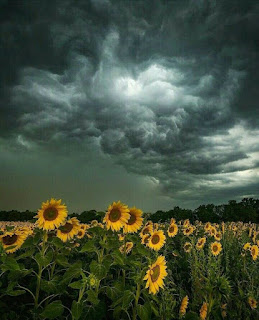I’m going to start big with this weed, which, according to the USDA, is “the most violently
toxic plant that grows in North America”. Found in marshes and wetlands in wide
swathes across the country, there is really no way to oversell the toxicity of
this plant. It contains an easily deadly neurotoxin called cicutoxin. If this toxin gets ahold of you, it
causes dizziness, confusion, vomiting, abdominal pain, convulsions, unconsciousness,
brain swelling, kidney failure and death. More or less in that order. And it
happens fast, symptoms can start within minutes of contact and death within
hours. According to this article, even those that survive can suffer from
hallucinations, delirium, muscle twitching, restlessness, and anxiety for
months after their poisoning. That’s horrifying. Water hemlock carries cicutoxin
in all its parts, but it is most concentrated in the tubers. And sometimes people eat the tubers. Why would anyone ingest this plant? Unfortunately it looks a lot like other plants that have edible tubers like wild parsnip,
watercress, wild celery and more. Uniformed foragers put themselves at great
risk if they recklessly ingest any of these types of plants. And it doesn’t
take much - a piece of water hemlock tuber the size of a walnut contains enough
toxin to kill a 1,200-pound animal. Another fairly common mistake that the
uniformed make is that they use the stems of this plant as straws because they
are hollow and look like the perfect natural straw. Not a good idea. Also, just
because they look like Queen’s Anne Lace,
do not cut some for your dinner table centerpiece. Educate yourself in dangerous
weeds that are out there before you go out. It’s best to learn to identify all
the plants on this list by sight, rather than characteristics that require you
to handle or examine the roots or inside the stem.
Death Camas (Zigadenus spp) –
Jimson Weed (Datura stramonium) -
If this weed is more familiar to you than the others, it’s probably for all the wrong reasons. Pop culture has made this out to be a natural hallucinogen that most people have easy access to. But it is first and foremost highly toxic and the hallucinatory aspects of it are less mind-expanding than mind-erasing. I know a couple of young men, spurred on by the hubris of youth, who decided to ingest some of this. They both ended up in the hospital in disassociated states, where they completely lost their minds for days and took weeks to find themselves again. They were deeply traumatized by the whole thing. If you still doubt this plant can destroy your mind, you should know that this plant is associated with zombie-making in Haiti. Here in the US, it is believed that jimson weed was documented by the settlers to Jamestown (1607) and that it was originally known as “Jamestown Weed”. What ensued was a lengthy list of deaths and hallucinatory episodes amongst those pioneers. According to this article, some soldiers ate some jimson weed in a stew and spent 11 days in a hallucinatory stupor. Jimson weed is a member of the notorious nightshade family and has beautiful and fragrant white blooms that night pollinators like. But the rest of the plant emits an unpleasant stinky-foot smell that keeps animals away. Jimson weed has some medicinal qualities that we know of (and more to be discovered) and is aesthetically pleasing but cultivating (especially for medicinal uses) is just best left to the experts.
Giant Hogweed (Heracleum mantegazzianum) –
This native of Central Asia was introduced to the US around the end of World War I as an ornamental (a very bad idea). Since then, it has become invasive in many parts of the country, with New York State being especially hard hit. One the plus side: This weed is big and hard to mistake for anything else. It can easily grow to 14 feet tall and has thick stalks with raised nodules and purple and red splotches; some people think it looks like a giant Queen Anne’s Lace. One the negative side: These weeds are hard to control for two reasons – they are resistant to many herbicides and contact with any part of it can cause burns and scarring. This is a plant that does not need to be ingested to mess you up – you just have to brush against it. Giant Hogweed contains a phytotoxic chemical compound known as furocoumarin. The insidious thing about this chemical is that the effects are activated by sunlight and may take up to 48 hours to fully appear. You can get ridiculously painful blisters and rashes, and if you accidently touched your eyes during any part of the exposure, you could go blind temporarily (at least hopefully temporarily). Oh, and the blisters and rashes will leave purple scars. Some people say that only people with sensitivity get the worst of these effects, while others say everyone is at risk. I say it’s not worth it to figure out where you land – just stay away from it and contact your local authorities to remove it.
There are many more plants out there that are waiting to pass along their toxicity; I highly encourage you to find out what’s growing where you live. Even if the toxic weeds in your neck of the woods can’t kill you, there are bound to be some that can ruin an otherwise wonderful day out in nature. There are also some pretty toxic plants in your local nursery that are being sold as landscape materials or houseplants; I will be addressing the most concerning of those in future blogs.Submitted by Pam
























